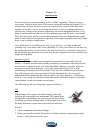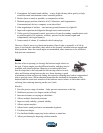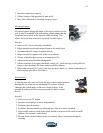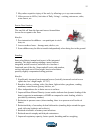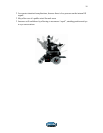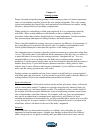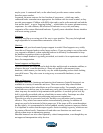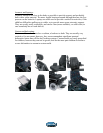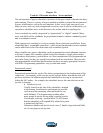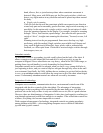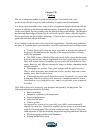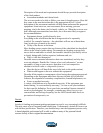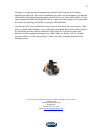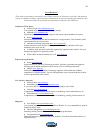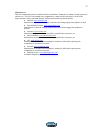
22
hand, elbows, feet, or just about anywhere where consistent movement is
detected. Many users with SMA may opt for fiber optic switches, which can
detect very slight motion in any direction and can be placed anywhere around
the body.
• Single switch scanning
If all else fails but the user has consistent reliable movement in one direction
at one body part and a reasonably good reflex time, single switch scanning is a
possibility. In this option only a single switch is used, the activation of which
stops the scanning sequence on the display. For example, it might be scanning
through: “Drive, seat function, speed change”, then after the user presses the
switch at “drive”, it might start scanning the directions; ”forward, reverse, left
right”.
Scanning interval can be pre-programmed. Some users develop very high
proficiency with this method. Single switches are available in all shapes and
sizes; small & light touch (Microlite), large, plush, with or without audio
feedback, or a fiber optic beam. Clients have accessed single switches through
their tongues, toes, etc.
Attendant controls:
An attendant control is a secondary joystick usually placed on the back of the chair. It
allows a caregiver to walk behind the chair and drive it with a joystick, in case the
occupant is fatigued. Power wheelchairs are very heavy, often in the 200-300lb range, so
pushing them via push handles is overly demanding for long distances.
Attendant controls can be useful for example when you have a very young child who is
just beginning to drive, and you want to help her navigate through busy areas in the mall
or a restaurant. Specifically for SMA, children have a tendency to get tired before the day
is over, so an attendant control would allow the caregivers to drive the chair when fatigue
occurs. Unfortunately attendant controls are often not covered by insurance.
Integration of technology:
Computer access modules, communication devices, environmental controls can all be
integrated with the drive controls of the wheelchair. The advantage of integrating
technologies is that everything will be controlled by the same body part, so if there is a
preferred site on the body or there is only one reliable access site, this is a good solution.
However, there are disadvantages of integration. It takes time (and cognitive readiness) to
scan through options and switch from one device to another. If the wheelchair control has
a failure, everything else becomes impossible to control.
With constant advancement of technology, integrated controls are gaining popularity
among children with SMA – often integrating computer access with their wheelchair
joystick/mini joystick control.



